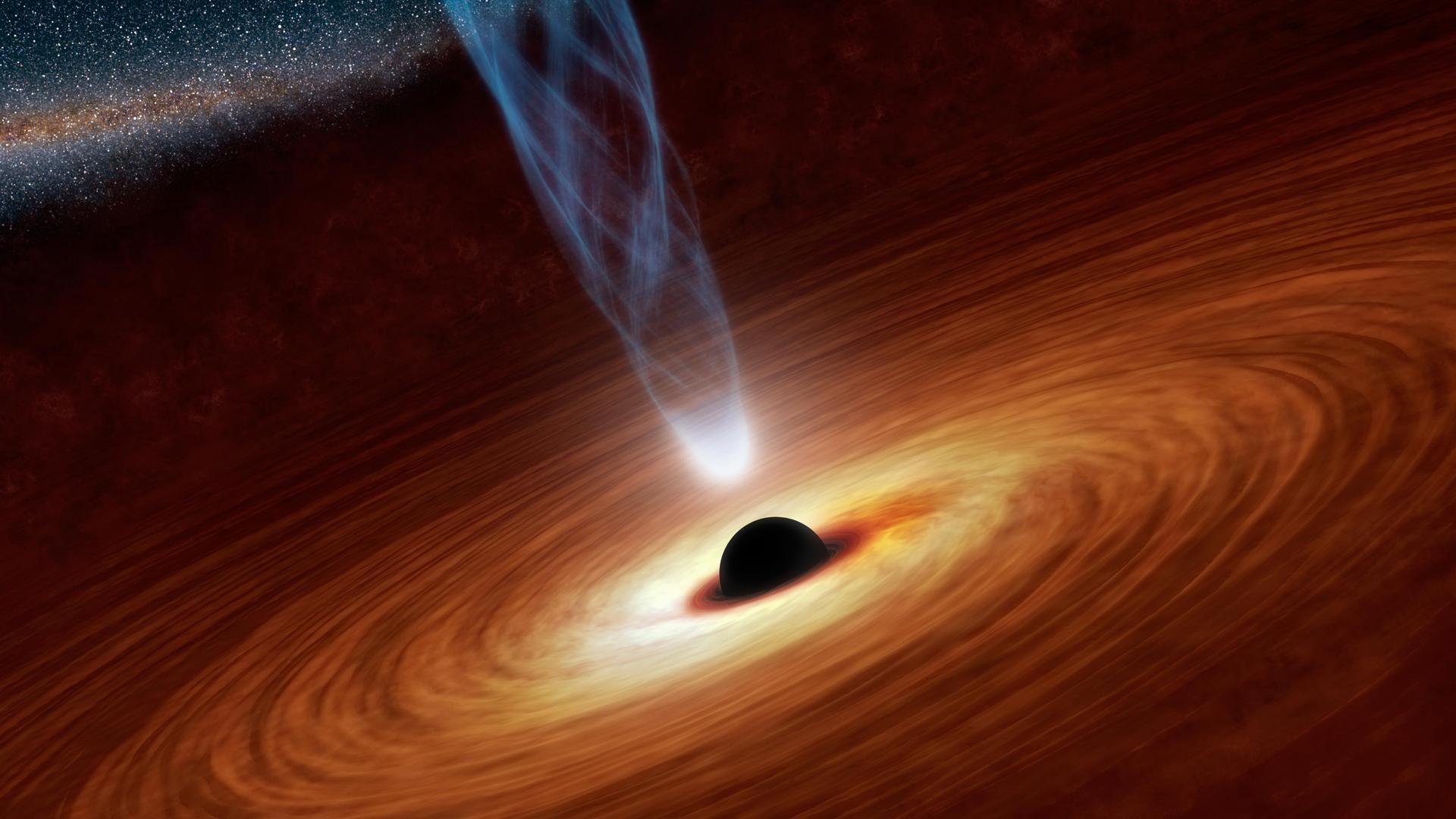
The fact that black holes must exist results from Albert Einstein’s general theory of relativity. This describes gravity as the curvature of space and time. Black holes are an extreme example of the curving of space-time. An extreme amount of mass is concentrated within such a small region of space that not even light can escape the gravitational well. The outer limb of a black hole is referred to as event horizon. Anything that crosses this event horizon can no longer escape. As its name suggests, a black hole appears black to observers. Although these objects can be recognised and characterised by their gravitational interaction, they only become visible against a bright background and can cast a “shadow”. We have taken advantage of this fact.Supermassive black holes contain billions of solar masses and reside at the centres of all galaxies. Matter flows towards these gravitational wells and finally falls into it. Before the matter crosses the event horizon, an enormous amount of energy is released; this is converted into radiation. This process results in extreme luminosities of radio galaxies. The radio galaxy Messier 87 (M87), some 55 million light years away, was theorised to contain such a supermassive black hole – which is why it was selected as a target of observation. M87 also exhibits a prominent jet of relativistic plasma that can be traced back to the location of the black hole.
Source:Max Plank Institude
No comments:
Post a Comment